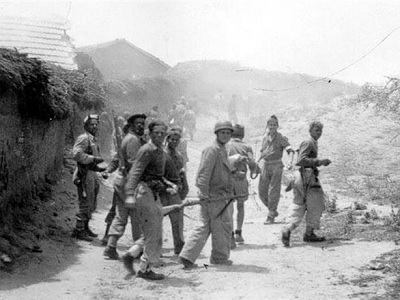
The current Intifada in Palestine cannot be separated from the past or reduced to a simple term linked to a failed peace process. It is a rebellion which is rooted in a much deeper and larger context, and that has to be appreciated in its entirety.
The defining event that led to his exile was the defeat of Beit Daras, a nearby but larger village inhabited by Palestinian fellahin, or farming peasants. The peasants were the majority of Palestinians, teetering between poverty and extreme poverty; some of them owned land, others worked as cheap labourers on the land of wealthy Palestinians. But they were always and would remain the heart of the resistance in Palestine. Indeed, in Beit Daras, they fought until the last bullet. What followed was a massacre that remained largely untold:
“The Zionist militias’ convoys eventually returned – this time with a vengeance. They struck at dawn and charged against the village until the early afternoon. The village was surrounded from all directions, and all roads leading into it were cut off to ensure that the fellahin fighters didn’t come to the rescue. Although by then the fighters in Beit Daras had acquired up to ninety rifles, the invading militias amassed an arsenal of modern weapons, including mortars, machine guns mounted on top of fortified vehicles, and hundreds of fully armed troops.”
“The militias moved in, executed whoever survived the initial onslaught – civilians and all. The rest escaped running through burning fields, tripping on one another while being chased by sniper bullets. The massacre instilled fear and horror, especially as the death toll had reached 300 in a village population that once barely totalled two thousand.”
– Read more: The 100-year Intifada – Ramzy Baroud, Al Jazeera




